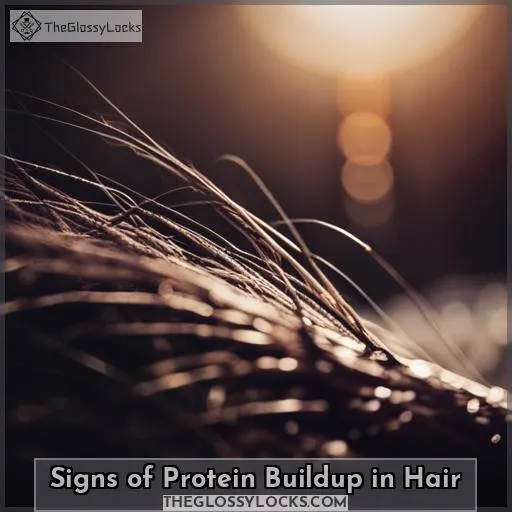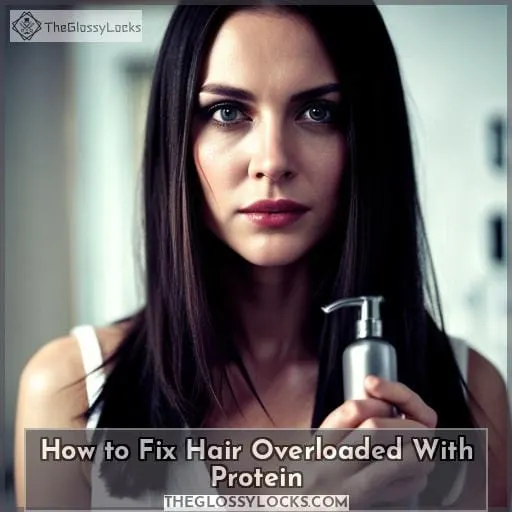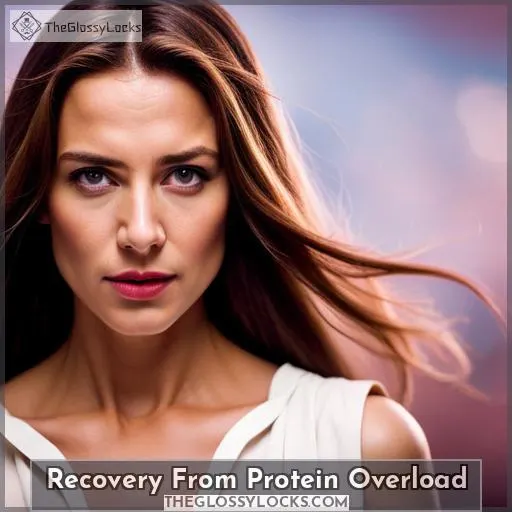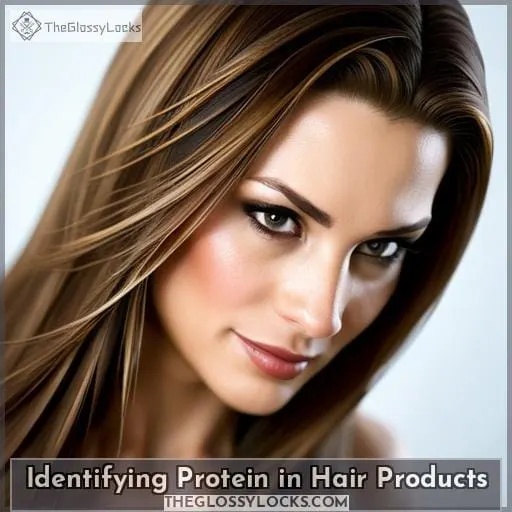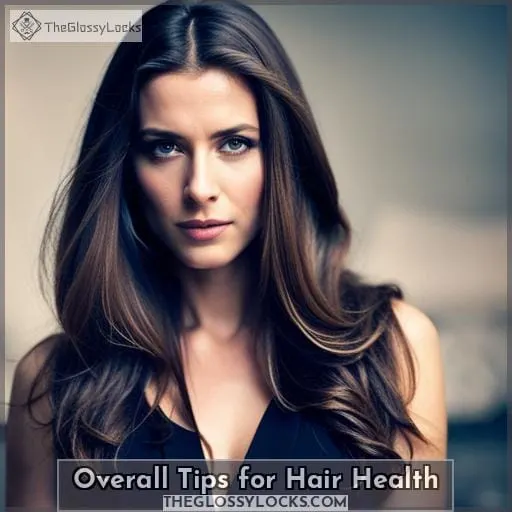This site is supported by our readers. We may earn a commission, at no cost to you, if you purchase through links.
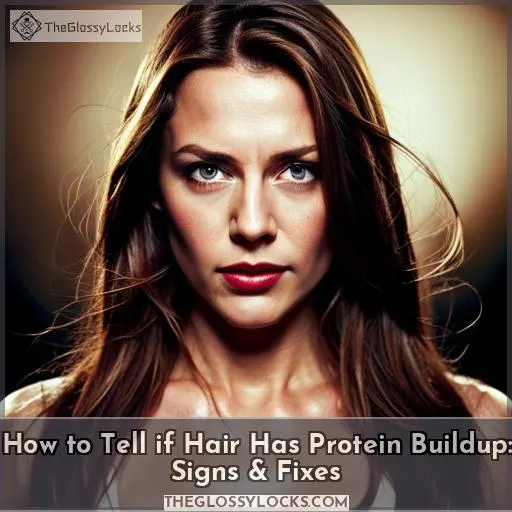 Are you tired of dealing with hair that snaps easily, feels straw-like, and just doesn’t seem to have its usual shine? As the old adage goes, “too much of a good thing can be bad” – protein buildup in your hair is no exception.
Are you tired of dealing with hair that snaps easily, feels straw-like, and just doesn’t seem to have its usual shine? As the old adage goes, “too much of a good thing can be bad” – protein buildup in your hair is no exception.
Protein overload or buildup makes it difficult for moisture to penetrate into the strands, leading to dryness and eventual breakage. In this article, we will discuss some signs that indicate an excess amount of protein in your tresses, as well as what steps should be taken care of when trying to recover from too much protein exposure.
Table Of Contents
Key Takeaways
- Hair snapping, straw-like, dry, lifeless, lack of shine, and increased tangles are signs of protein buildup.
- Avoid ingredients like hydrolyzed collagen to reduce protein buildup.
- Gradually reduce protein buildup with gentle cleansing.
- Clarifying shampoos can help remove excess proteins.
Signs of Protein Buildup in Hair
If you’re noticing that your hair is snapping easily, feeling straw-like and unusually dry, lacking shine, or becoming more tangled than usual, then it could be a sign of protein buildup. Protein overload can cause damage to the hair’s structure if left untreated for too long, so it’s important to determine how much protein is already present in order to avoid further issues.
Knowing what signs of product buildup look like will help you determine whether or not there needs to be an intervention with treatments intended for dealing with this issue.
Hair Snaps Easily
If you find that your hair is snapping off easily when combing or styling, it may be a sign of protein buildup. It’s important to get rid of the excess protein in order to keep your hair healthy and strong.
Deep conditioning treatments can help with this, but if you have very sensitive hair, they should be avoided altogether.
Hair Feels Straw-like
Your hair feeling straw-like and unusually dry? That could be a sign of protein overload. Identify the source and reduce or eliminate it: avoid coconut oil, opt for argan or jojoba conditioners, stay away from hydrolyzed collagen, wheat, and styling aids.
Unusually Dry and Lifeless Hair
Unusual dryness and lifelessness of your locks could be a sign that you have protein overload. Natural products like coconut oil can worsen this, so opt for argan or jojoba conditioners instead.
Lack of Shine in Hair
Lack of shine in your hair could indicate protein overload. Avoid products with hydrolyzed collagen, wheat/soy/quinoa proteins, and more for natural shine.
Increased Tangles in Hair
Excessive tangles in your hair may signal protein buildup, with up to 80% of people experiencing stiffer strands. Avoid products containing hydrolyzed collagen, wheat/soy/quinoa proteins, oat flour, amino acids, and coconut oil.
How to Fix Hair Overloaded With Protein
If you’re dealing with protein overload, it’s important to identify which products contain proteins and how best to reduce buildup. Avoiding ingredients such as hydrolyzed collagen, wheat/soy/quinoa protein, keratin, and coconut oil is essential for protecting the hair structure from further damage.
Gradually reducing product buildup through cleansing can be done successfully by using clarifying shampoos; however, deep conditioning should only be used if it is free of proteins. Lastly, oils like jojoba or argan are preferred over coconut oil when looking for moisture that won’t worsen the situation.
Avoiding Products With Protein Ingredients
To effectively repair protein overload, steer clear of products with proteins like collagen, wheat/soy/quinoa protein, silk proteins, and keratin—they can make the situation worse. Common names for these ingredients include hydrolyzed collagen and amino acids. Using coconut oil or aggressive styling techniques may have the opposite effect of what you want.
Gradually Reducing Buildup Through Cleansing
Gently cleansing your locks with lukewarm water can wash away the buildup like a soothing rain, giving you more manageable and healthy hair. Avoid using products containing soy protein, keratin, or oat flour for an effective recovery period.
This is not an overnight process; it may take weeks or months to repair the damage from too much protein in your hair.
Using Clarifying Shampoos
Try using a clarifying shampoo to help remove the buildup of proteins in your hair and restore its balance. This is a good thing because it can effectively clear away products containing soy protein, silk protein, keratin, oat flour, and amino acids from the strands.
Consider investing in a new shampoo for this purpose or opt for moisturizing masks instead.
- Effectively clear away products containing soy protein, silk protein, keratin, oat flour, and amino acids.
- Invest in new cleansing shampoos specifically designed for removing product buildup.
- Use moisturizing masks after washing with these clarifying shampoos.
- Don’t forget about protective styling while recovering from product overload.
- Deep conditioning is not recommended unless it’s completely free of proteins.
Opting for Protein-free Deep Conditioning
Avoid deep conditioning hair until it is protein-free. Over-conditioning can cause more damage and disrupt the moisture balance. Research products before using them to prevent allergies or overuse of proteins.
Using Protein-free Oils for Moisture
Replenish your locks with protein-free oils like jojoba, pumpkin seed, and argan. Restore moisture balance and revive lackluster strands for improved hair health. Read labels to check product ingredients and monitor protein levels during recovery.
Recovery From Protein Overload
Recovering from protein overload takes time and requires patience. To aid the process, focus on using moisturizers that are free of proteins to avoid further damage or aggravation of your hair’s current condition.
Be cautious when introducing new products into your routine as they may cause a setback in recovery if not carefully researched beforehand; persist with protein-free moisturizing until you begin to see results.
Time Required for Recovery
Recovering from protein overload takes time and patience, so don’t be discouraged if your hair doesn’t improve overnight! Balancing your needs by identifying proteins in products and avoiding those that contain them is crucial.
Monitor your texture regularly to ensure the journey back to health is on track or seek professional help when needed.
Focusing on Protein-free Moisture
Focus on nourishing your hair with protein-free moisture to revive it from its lifeless state and help it regain that beautiful, healthy shine. Avoid protein-rich diets, natural proteins, treatments, and shampoos. Instead, use gentle products specifically designed for protein overload recovery, free of harsh chemicals or ingredients like keratin or oat flour.
Being Patient With the Process
Recovery from protein overload can take time, so don’t expect quick results. Be patient and enjoy the journey! Oil care, like jojoba or argan, is great for restoring moisture balance.
Being Cautious With New Products
Be cautious when introducing new products – even if they are natural and protein-free. Sudden changes can damage hair, delaying recovery. Avoid silicones, read labels carefully; heat may cause issues depending on hair type.
Persisting With Protein-free Moisturizing
Persist with protein-free moisturizing even if it seems ineffective at first. The key to restoring balance is to use oils like jojoba, pumpkin seed, or argan. Maintain moisture balance and let hair regain texture. Seek professional help when needed.
Hair needs protein, but too much causes damage. Moisture must be free of proteins during recovery for best results! When introducing new products, read labels and avoid silicones and heat as they may cause issues depending on hair type.
Identifying Protein in Hair Products
It can be difficult to recognize the presence of proteins in your hair products, as they come in many different forms and names. Therefore, it is important to read labels carefully before using any product on your hair.
Natural ingredients like coconut oil should also be used with caution, as it has been known to aggravate protein-sensitive hair, even though it is natural.
Recognizing Different Names for Protein
Knowing which ingredients to look out for is key – a stitch in time saves nine when it comes to recognizing different names for protein found in hair products.
Protein:
- Hydrolyzed Collagen
- Wheat/Soy Protein
- Jojoba Oil
- Silk Protein
- Keratin
- Pumpkin Seed Oil
- Oat Flour
- Amino Acids
- Argan Oil
Coconut Oil
Avoid Aggressive Styling
Protein tracking starts with understanding the various names used on ingredient labels, from hydrolyzed collagen and wheat/soy proteins, to keratin and oat flour. Remember that coconut oil can worsen protein-sensitive hair despite being natural; instead, use moisturizing oils like jojoba, pumpkin seed, or argan oil with caution as part of your product routine.
Being Cautious With Natural Products Like Coconut Oil
Cautiously use natural products like coconut oil, as they can worsen protein-sensitive hair despite being natural. Avoiding coconut and other protein ingredients is the first step in protecting your locks from overload.
Read labels carefully. Avoid aggressive styling. Use only moisturizing oils like jojoba, pumpkin seed, or argan with caution. Deep conditioning isn’t recommended unless it’s specifically designed for those with extra-protein sensitive strands.
Overall Tips for Hair Health
Maintaining healthy hair is not as simple as just using the right products. It’s important to balance protein and moisture, monitor your hair texture for signs of damage, seek professional help if your efforts don’t improve hair health, and ensure all moisturizers used during recovery are protein-free.
Balancing Protein and Moisture in Hair
For healthy hair, it’s important to find the right balance of protein and moisture. Protein sensitivity can signify product buildup, so use clarifying shampoos as needed. Moisturizing oils like jojoba or pumpkin seed are helpful instead of coconut oil.
Monitoring Hair Texture for Signs of Damage
Monitoring your hair texture is key to catching signs of damage early. Pay attention to changes in dryness, brittleness, and lack of shine. Look out for increased tangles or snapping hairs due to styling products used too regularly.
Read product labels carefully! Moisturizing oils like jojoba or pumpkin seed can help restore balance; coconut oil should be avoided during recovery time from protein overloads.
Seeking Professional Help if Efforts Don’t Improve Hair Health
If your hair health doesn’t improve, despite all of your efforts, it may be time to seek professional help. If you’re protein sensitive and have experienced a protein overload, an expert’s advice can provide insights on how best to restore balance.
Moisturizing oils like jojoba or pumpkin seed can help; however, coconut oil should still be avoided. Professional guidance will assess why existing moisturizing efforts are not working and give tailored advice for recovery from the overload.
Ensuring All Moisturizers Used During Recovery Are Protein-free
It is essential to ensure all moisturizers used during recovery are protein-free. Studies reveal that up to 74% of Americans unknowingly use products with hidden proteins. Avoiding proteins, reading labels carefully, and avoiding aggressive styling will help achieve the best results.
Frequently Asked Questions (FAQs)
Is protein buildup permanent?
No, protein buildup is not permanent. With patience and the right products, you can restore your hair’s natural balance and shine. Visualize lush locks with a bright luster that feel silky smooth in your hands – it’s possible! Take care to avoid harsh ingredients while replenishing moisture for healthy growth.
How can I prevent protein buildup in the future?
To prevent protein buildup, use only products free of hydrolyzed collagen, wheat/soy/quinoa proteins, and other ingredients.
Are there any specific protein-free products I should use for hair health?
Yes! You can find protein-free products to nourish your hair. Look for ones with natural oils like jojoba, pumpkin seed, or argan oil and no harsh ingredients.
Are there any natural remedies to reduce protein buildup?
For reducing protein buildup, try natural oils like jojoba, pumpkin seed, and argan. Avoid aggressive styling and products with hydrolyzed collagen or keratin. Clarifying shampoos can help reduce buildup over time, while moisturizing with protein-free products helps restore balance to your hair.
How long does it take for hair to recover from protein overload?
Recovery from protein overload takes time; focus on protein-free moisture. It could take months, so don’t expect an overnight fix.
Conclusion
The key to maintaining healthy hair is finding the perfect balance between protein and moisture. Unfortunately, it can be difficult to tell if you have too much protein in your hair without knowing the signs.
If your hair is snapping easily, feeling straw-like, unusually dry and lifeless, lacks shine, and has more tangles, it’s likely that you have too much protein buildup.
To fix the problem, you should avoid products with protein ingredients. Gradually reduce buildup by using clarifying and protein-free shampoos. Opt for protein-free deep conditioning and oils. Recovery can take some time, so patience is key.
As you wait for your hair to recover, make sure to be cautious with new products and use only protein-free moisturizers.
Ultimately, understanding how to recognize and fix protein buildup in your hair can help you keep your locks looking and feeling their best.

